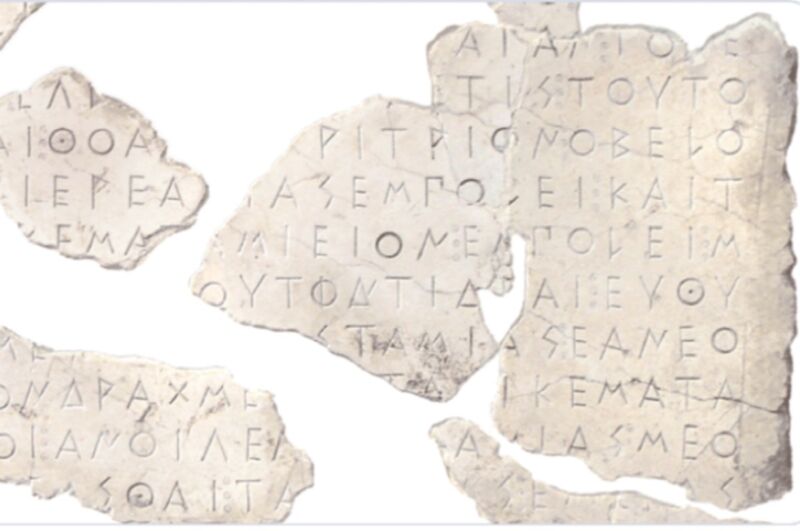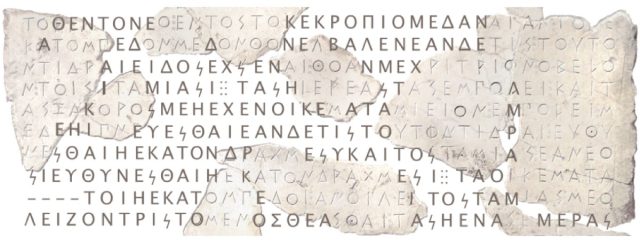
The new system, dubbed Ithaca, builds on an earlier text restoration system called Pythia, and uses deep neural networks to help historians decipher the text of damaged inscriptions from ancient Greece.
According to a new paper published in the journal Nature, Ithaca can help historians in restoring text and also identify the location of origin and the date of creation. An ongoing debate about the correct dates for a group of ancient Athenian decrees has been helped by Ithaca. The team is making its code open source and an interactive version of Ithaca is freely available.
Large chunks of text are often not legible from ancient sources like scrolls, papyri, stone, metal, or pottery. It can be difficult to determine where the texts came from, since they have likely been moved many times. Since they can damage priceless artifacts, radiocarbon dating and similar methods cannot be used to accurately determine when they were produced. Epigraphists who specialize in those skills are the ones who have to interpret these incomplete texts.
The folks at DeepMind wrote about it.
One of the issues with discerning meaning from incomplete fragments of text is that there are often multiple possible solutions. In many word games and puzzles, players guess letters to complete a word or phrase—the more letters that are specified, the more constrained the possible solutions become. But unlike these games, where players have to guess a phrase in isolation, historians restoring a text can estimate the likelihood of different possible solutions based on other context clues in the inscription—such as grammatical and linguistic considerations, layout and shape, textual parallels, and historical context.
Pythia, an ancient-text restoration system named after the high priestess who served at the oracle, was developed by DeepMind and the University of Oxford.
Advertisement
The largest digital collection of ancient Greek inscriptions was converted to machine-readable text. The researchers trained Pythia to predict the missing letters of words in the inscriptions. Pythia was trained to use deep neural networks.
When faced with an incomplete inscription, Pythia produced as many as 20 different possible letters or words that could fill in the gaps, as well as the confidence level for each possibility. It was up the historians to sift through those possibilities and make a final determination based on their expertise.
The team tested the system by comparing Pythia's results to those of Oxford graduate students. The students had an error rate of 57.3 percent while Pythia had a 30.1 percent error rate. Pythia was able to complete the task in just a few seconds, compared to two hours for the students.
Assael and his friends are back in Ithaca. Ithaca makes predictions about the geographical location of incomplete inscriptions. To shed light on possible underlying geographical connections across the ancient world, the team visualized the probability distribution over all possible predictions on a map. Ithaca gives a distribution of its predicted dates between 800 BCE and 800CE.
Advertisement
In the restoration of damaged text, Ithaca is able to achieve 62 percent accuracy, compared to 25 percent for human historians. The combination of man and machine increases the accuracy to 72 percent. Ithaca can attribute inscriptions to their original location with 71 percent accuracy and 30 years to go.
A test case involving a set of Athenian decrees that have been at the center of a dating controversy gave Ithaca the chance to demonstrate its usefulness to historians. Historians had previously pegged the dates of the decree to be no later than 446 BCE. The assessment was based on the letterforms used by the Athenian bureaucracy. The Athenians used an ionized four-bar sigma for their decrees.
This was the standard dating method for Athenian inscriptions until other historians began to question its assumptions. Historians discovered that the Attic letterform had been used in official documents for a long time. The dates of many of these decrees should have been earlier. In keeping with the conclusion, Ithaca predicted a date of 421 BCE.